Email marketing software
that converts
Create and send email marketing campaigns and automations that increase revenue and grow your brand.
Trusted By



The email marketing platform that helps you to:
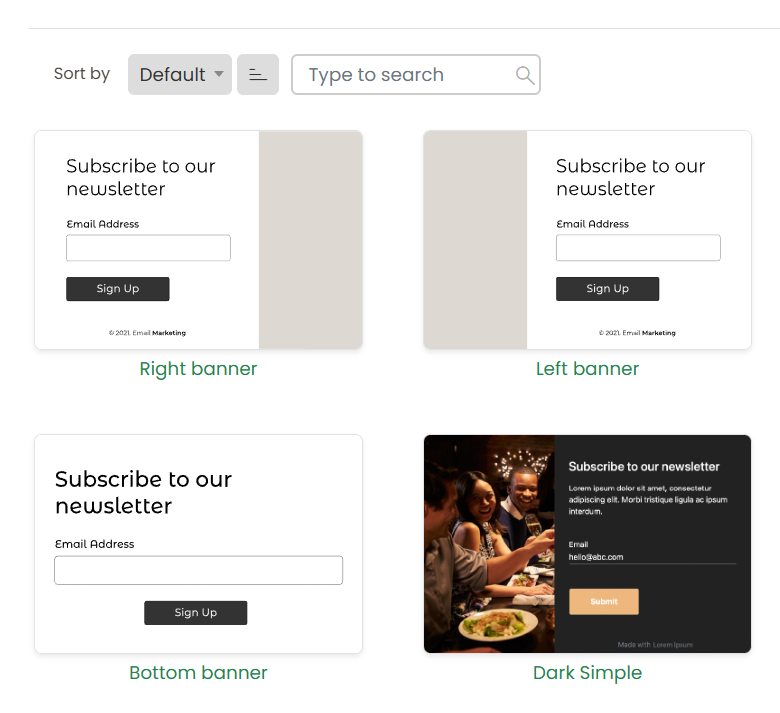
Collect leads and increase subscribers with customizable sign up forms that integrate into any website CMS like WordPress, Webflow, and more.
Start from ready to go email templates or create your own in our easy-to-use email builder. Craft your content in a clutter-free editor for a seamless experience.
Build and send emails that reach the inbox and stay out of spam with no coding needed.
Trigger email sequences, organize subscribers, and set up your ideal customer journey experience with our automations tool.
Automatically organize your audience based on entry, interaction, and interests, so you can be confident that the right content reaches the right people at the right time.
Our best work
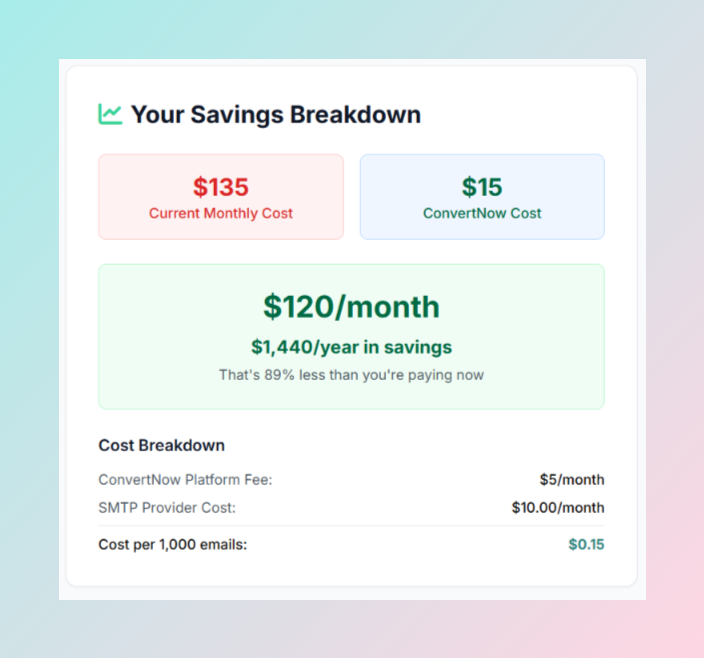
Automatically generate revenue from abandoned carts
We rebuilt a client’s abandoned cart sequence — and increased recovered revenue by 22% in 30 days.
Your welcome flow can have better open rates
Our optimized welcome series hit a 43% open rate and doubled first-purchase conversions.
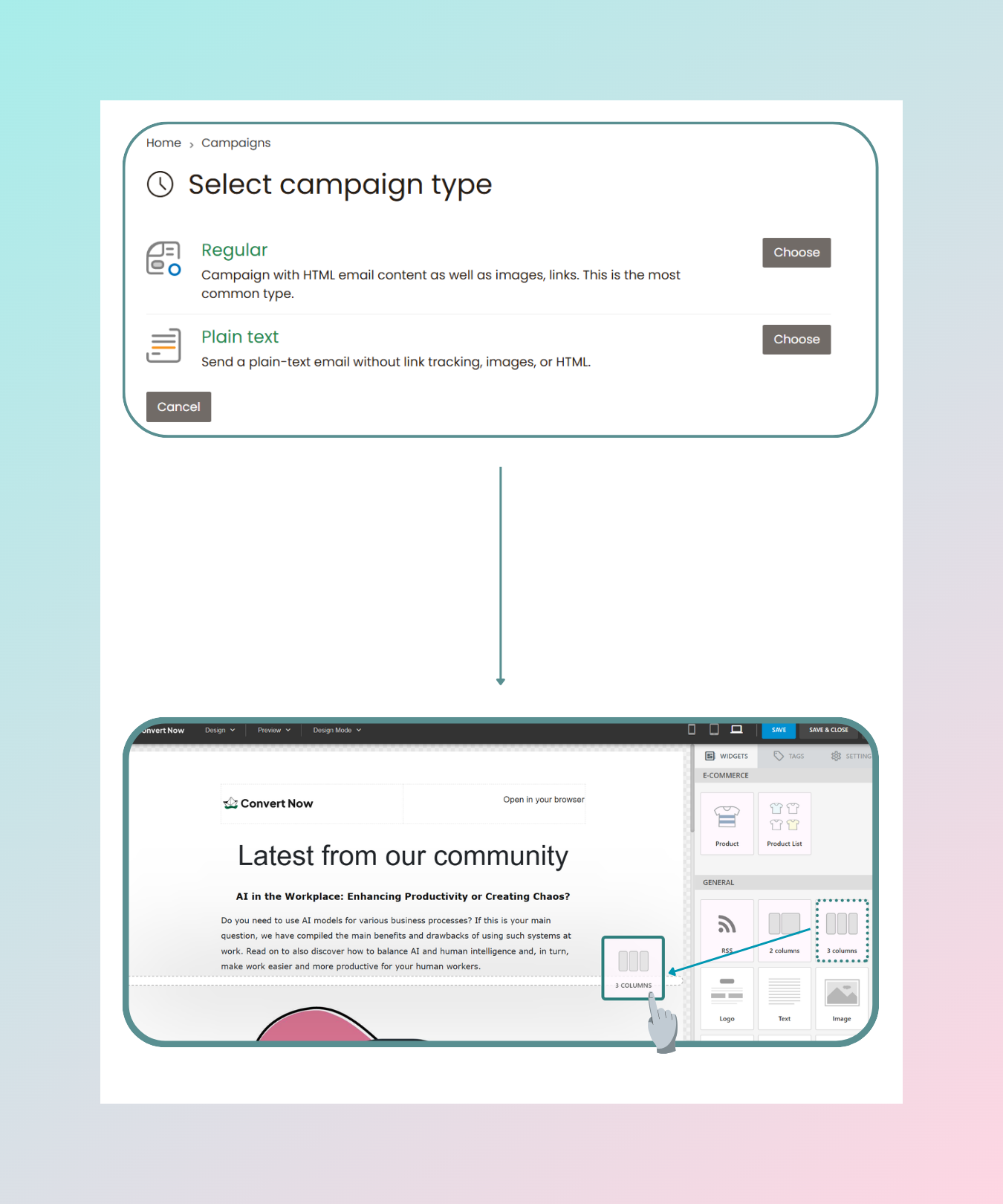

Real Results: From Spam Risky to Inbox Ready
Everlab tested their campaign with ConvertNow.Original Score: 64/100 – heavy images, low text ratio, flagged words.
After Fixes: 82/100 – inbox placement improved by 10%, spam placement dropped to 0%.
Original Score: 64/100 – heavy images, low text ratio, flagged words.
After Fixes: 82/100 – inbox placement improved by 10%, spam placement dropped to 0%.
One test, immediate ROI
Don’t risk another campaign in spam. Run your free email spam check today.
Paste Your Email
Copy your HTML email or template into ConvertNow’s email spam checker. No complicated setup, no integrations required.
Run the Analysis
In seconds, our system scans your content for spam trigger words, broken HTML, image/text ratio, and more. You’ll get a Convert Score™ (0–100) with clear indicators of risk.
Fix Issues Instantly
Review the flagged problems—whether it’s too many images, missing text, or a bad unsubscribe placement—and apply simple fixes before you send.
Send With Confidence
Armed with a stronger Convert Score™, you’ll know your email is more likely to land in the inbox—not the spam folder.
SEGMENTATION
Make precise targeting a
breeze
Target the right people with the right message at the right time with unlimited segments that update in real time. Group your audiences based on campaign activity, shopping behavior, and more.
- 62.2%
Higher order rate with segmented campaigns. Get a second chance every time someone abandons their basket.
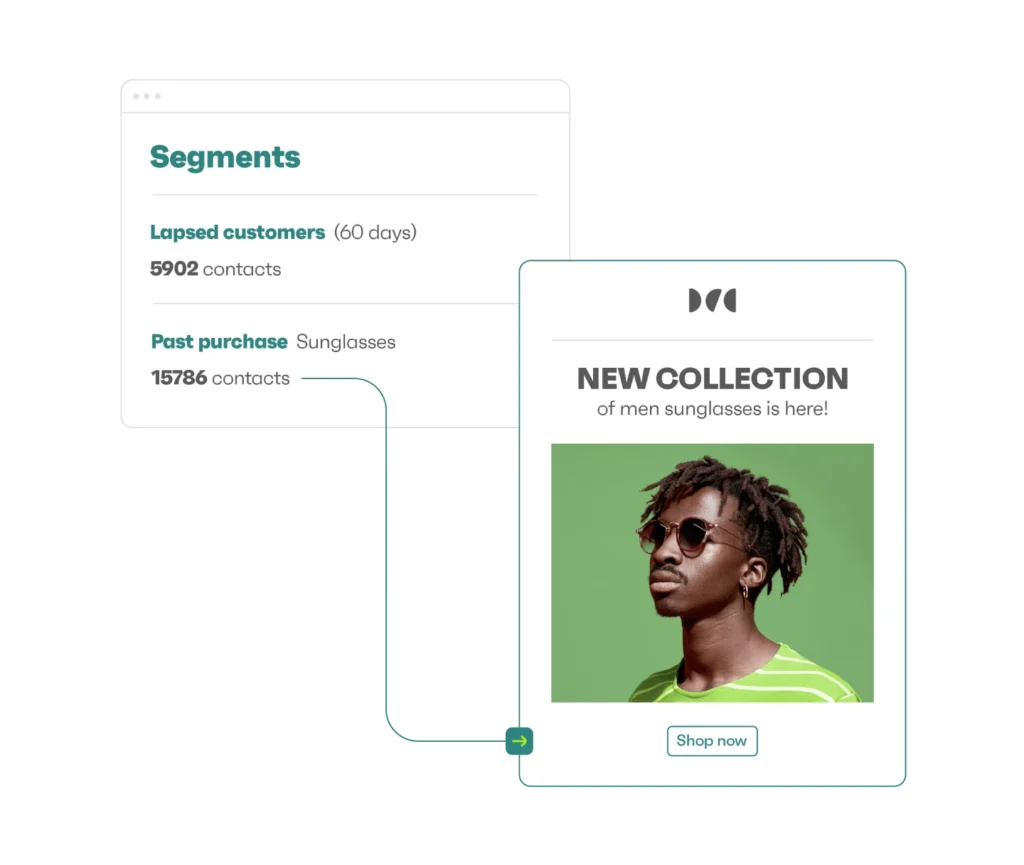
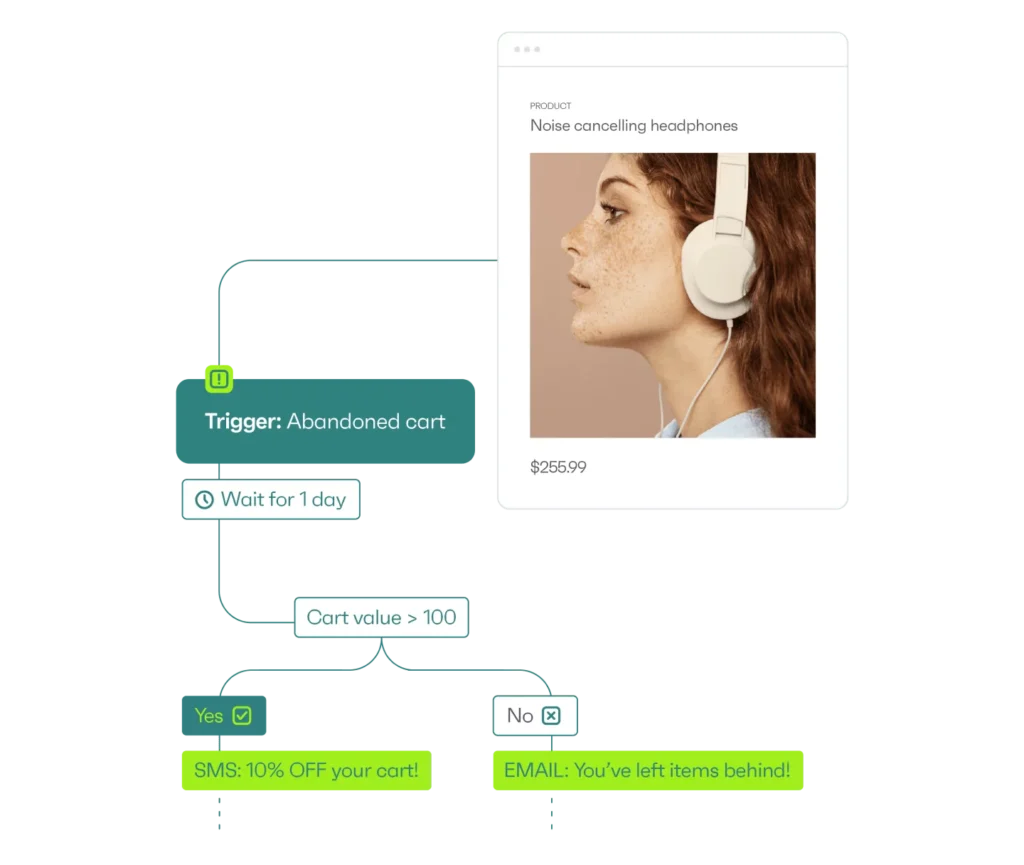
AUTOMATION
Drive sales on
autopilot
Save time with pre-built automations that drive sales. From welcome series and abandoned cart, to post-purchase campaigns and more – get up and running in minutes.
- 97.7%
People saving time using our email marketing
automation tools
EMAIL + SMS MARKETING
Powerful alone,
unbeatable
together
Engage your shoppers wherever they are with integrated email & SMS campaigns. All templates are 100% customizable so you can give your customers the on-brand, personalized experience they love – all from a single platform.
- 47.7%
Higher conversion rate with SMS combined
with email
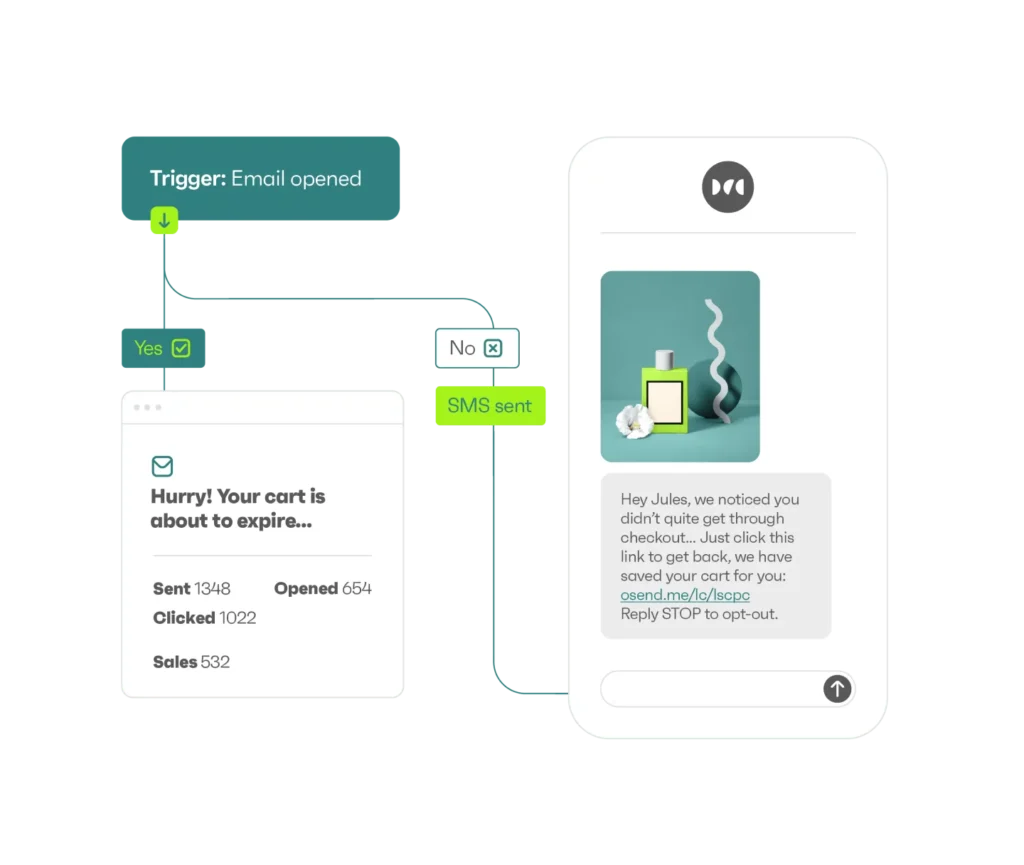
How we better your
Business Workflow
Convert Nowl streamlines your business workflow by automating key communication tasks, freeing up valuable time and resources.
With intuitive design and automation features, you can set up efficient email sequences, from welcome emails to follow-ups, ensuring consistent engagement with minimal manual effort.
Our tool integrates seamlessly with your existing CRM and sales platforms, providing a cohesive view of customer interactions and enabling targeted, timely communications. This not only enhances team productivity but also ensures that your marketing efforts are more aligned with your business goals, driving efficiency and effectiveness across your operations.


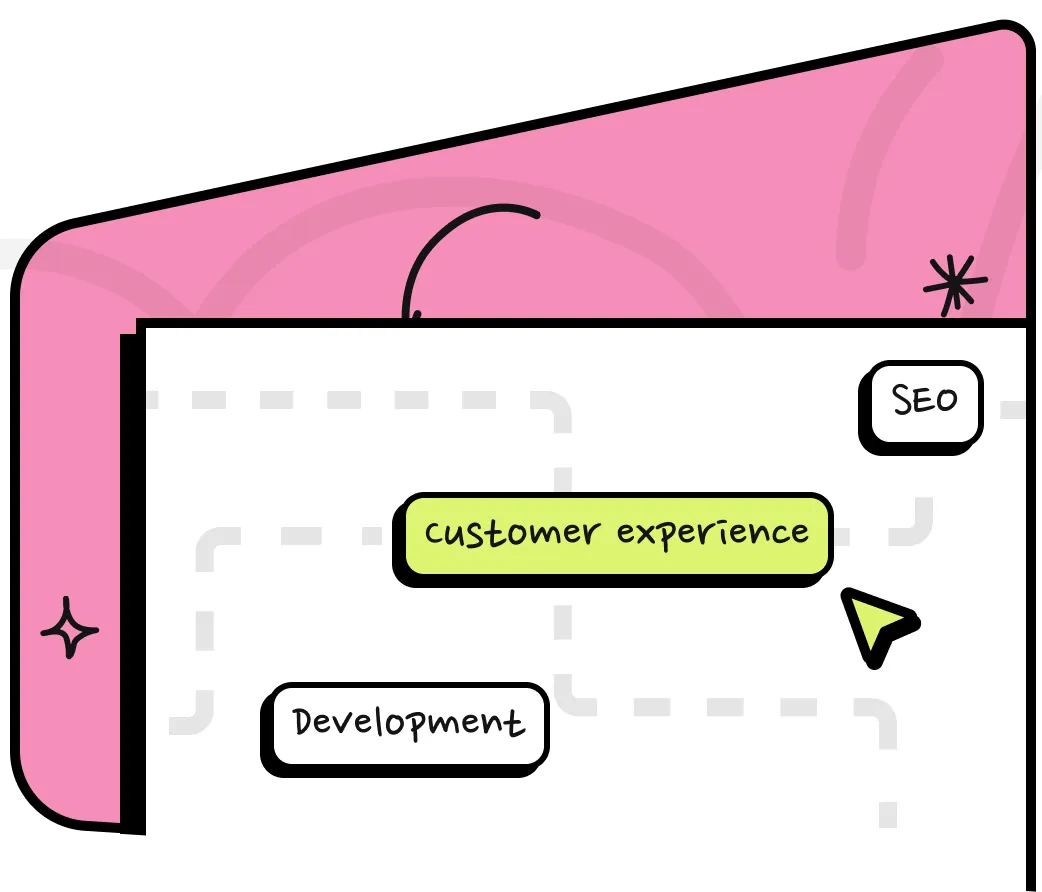
How we automate your
E-commerce Store
Convert Now empowers your eCommerce store by creating personalized shopping experiences for every customer. Through targeted campaigns, product recommendations, and timely follow-ups, we help you boost sales, retain customers, and increase your store’s average order value.
Our tool’s advanced segmentation capabilities ensure that your messages are highly relevant, encouraging repeat purchases and fostering brand loyalty.
With our intuitive analytics, you can track the effectiveness of your campaigns, refine your strategies, and drive sustainable growth for your eCommerce business.




How we boost your
Social Media Game
Our email marketing tool serves as a bridge between your social media efforts and direct engagement strategies, amplifying your reach and deepening connections with your audience.
By integrating with your social media channels, we enable you to convert followers into email subscribers, extending the conversation beyond the constraints of social media algorithms.
This synergy allows for more personalized and comprehensive communication, driving higher engagement rates and fostering a community around your brand. With targeted campaigns and insights into subscriber preferences, our tool helps you craft content that resonates, turning social interactions into lasting relationships and measurable results.



How we improves your
Website Experience
Convert Now is designed to transform your website experience by engaging your audience with personalized, timely, and relevant content right in their inboxes.
By leveraging advanced segmentation and analytics, we ensure that every message resonates with its recipient, driving higher open rates, click-through rates, and conversions.
This seamless integration enhances user engagement and keeps your audience connected with your brand, turning casual visitors into loyal customers. Experience the power of strategic email marketing and elevate your website’s potential today.


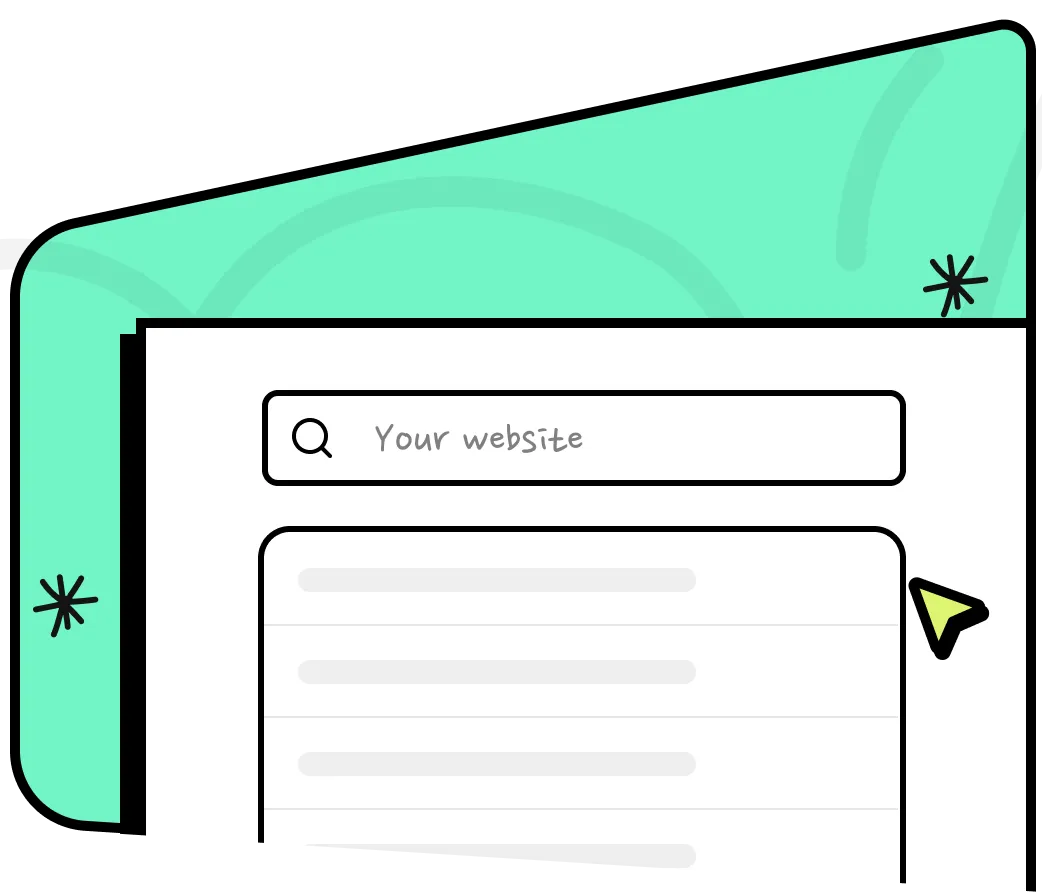
Leading brands trust us























Integrations
Seamlessly connect with your favorite tools
Easily connect other web apps with Convert Now so they seamlessly work together to share information and automate workflows.
Frequently Asked Questions
Convert Now is free to start. If you have 5,000 subscribers and below, you can send upto 10,000 emails per month for free. We have one of the most generous free plans in the email marketing software industry, and we want you to enjoy it.
For users that need more than 10,000 emails per month, we have designed the most affordable plans for you. Find more details on our pricing page.
Getting set up on Convert Now should take 2 minutes.
Create an account, create your first email list, upload your subscribers or add your contacts and you are ready to create your first email marketing campaign.
Our email templates make it quite easy to create your first email copy and within the first 20 minutes you should have sent your first campaign if you want to.
Yes we do track your email analytics using our advanced analytics solution.
You have full visibility into your email campaign data including delivery, open, click, bounce and unsubscribe rates.
You can embed sign up forms on your website in any CMS that you use from WordPress to Webflow, Shopify and more.
Once you log in, create your first form, design it however you want it to look like or use our templates and tweak branding elements to match your brand’s design then set it to go live.
Copy the simple code generated and paste it where you want the form to show on your website and you are ready to start collecting subscriber emails.
An email spam checker is a tool that scans your email templates for deliverability issues. From spam trigger words and missing authentication records to image-heavy designs, these issues can cause your campaigns to land in spam instead of the inbox.
ConvertNow’s free spam checker is built for marketers, SaaS teams, and agencies who want higher deliverability without the guesswork.
ConvertNow uses proven spam filter rules combined with content analysis to generate your Convert Score™ (0–100). It’s a strong indicator of how mailbox providers like Gmail or Outlook will treat your email.
Yes. The Free plan gives you 3 free spam checks per month. You can test your campaigns, see your Convert Score™, and fix issues at no cost. Paid plans unlock more tests, history, PDF reports, and advanced checks like SPF/DKIM/blacklist analysis.
Yes. Running your campaign through the spam checker highlights issues that directly impact inbox placement. Fixing these factors before sending can improve your open rates and reduce spam folder placement.
Email service providers usually show only desktop/mobile previews. ConvertNow goes further: we test your content against spam rules, balance your text-to-image ratio, conduct a few other tests, and give you an overall deliverability score so you know if your email is truly safe to send.
Marketers
Newsletter creators
Agencies running client campaigns
Anyone who wants higher inbox placement and fewer emails going to spam
Just paste your email template into the free spam checker and click analyze. You’ll get instant results and clear fixes in seconds.
Simply start a live chat with us by clicking the chat button on the bottom right of your screen or send us an email at [email protected]. We’ll be happy to answer any of your questions. We might not reply immediately due to timezone differences, but we will get back to you in 12hrs or less.
How to Create Email Templates That Avoid Spam Filters
Nearly 49% of all emails sent globally are flagged as spam.
Poorly structured emails are more likely to be filtered out, making it harder to reach your audience.
This guide shows you how to use our Spam Checker to review your HTML email templates, identify spam triggers, and get actionable tips to improve deliverability.
1. Why Spam Filtering Still Matters in Email Marketing
Spam filtering still matters because it directly affects whether your emails reach the inbox or disappear into the spam folder.
Internet Service Providers (ISPs) like Gmail, Outlook, and Yahoo use advanced spam filters to protect users from unwanted or harmful messages.
These filters evaluate everything from your sender reputation to your email’s HTML structure before allowing it through.
For marketers, this means playing by strict rules.
Unlike one-on-one cold emails, marketing templates for campaigns or newsletters are sent to larger, permission-based lists.
That volume increases the chances of being flagged if your emails contain bad formatting, spammy language, or poor code.
Even beautifully designed HTML emails can trigger spam filters if the structure is messy or includes suspicious elements.
That’s why understanding and respecting spam filters is essential, not just for good deliverability, but for making sure your audience actually sees what you send, so let’s dive into how we can keep our emails out of the spam folder and right into the inbox.
2. Common Spam Trigger Words to Avoid
Spam trigger words are terms and phrases that email filters (e.g., Gmail, Outlook) flag as suspicious, often linked to unsolicited or overly promotional content.
These words, like “FREE MONEY NOW!!!” or “ACT FAST,” immediately signal potential spam to algorithms. Filters learn these patterns, directly impacting your sender reputation and whether your emails reach the inbox or spam folder.
To help you navigate this, here are key categories of spam trigger words you should be aware of:
- Financial & “Get Rich Quick”: Free, Cash, Money, Loan, Credit, Debt, Income, Investment, Opportunity, Make money, No strings attached, Work from home.
- Urgency & Scarcity: Act now, have limited time, be urgent, don’t miss out, have an exclusive offer, while supplies last, have a final chance, and are instant.
- Medical & Health: Cure, Miracle, Diet, Weight loss, X-rated, Viagra, Supplements, Lose weight.
- Marketing Buzzwords: Discount, Deal, Promotion, Offer, Guaranteed, Winner, Congratulations, Prize, You’ve been selected.
- Overly Aggressive Sales: Buy now, Order now, Call now, Click here, Big savings, Incredible deal.
When your email copy contains too many of these words, it significantly increases your “spam score” – an internal rating spam filters assign to your email.
The higher your spam score, the more likely your email will be filtered.
Remember, the goal of your email copy is to be helpful and valuable, not to sound like a late-night infomercial. Instead of “Act now!“, consider “Ready to learn more?” or “Explore our latest collection.”
It’s about building trust, not creating artificial pressure.
I highly recommend checking out this comprehensive guide on Spam Words to Avoid.
3. Best Practices for Subject Lines and Body Copy
Your subject line is your email’s first impression, where many emails falter.
Spam filters are highly attuned to subject line patterns.
So, how do you stay persuasive without sounding like you’re trying to con someone?
Personalization is Powerful:
Using your subscriber’s first name in the subject line (e.g., “John, exciting news for you!“) can significantly improve open rates and signal to filters that your email is relevant.
In fact, personalized subject lines can increase open rates by 26%, according to an extensive study by Campaign Monitor.
It shows you’ve done your homework and are speaking directly to them.
Clarity Over Clickbait:
Be clear and concise about what’s inside. “Your July Newsletter” or “New Arrivals at [Your Brand]” are far more effective and trustworthy than “YOU WON!!!” or “Open ME for a surprise!“
A study by Return Path found that 69% of email recipients report email as spam solely based on the subject line. So, transparency is key.
Avoid ALL CAPS:
THIS IS SCREAMING AND SPAM FILTERS HATE IT. Seriously.
It’s perceived as aggressive and unprofessional, and emails written in all caps are more likely to be flagged as spam or ignored by readers.
Instead, use sentence case or bold text to highlight key points without triggering filters.
For example, write Get 20% off your first order instead of GET 20% OFF YOUR FIRST ORDER!!!
Excessive Punctuation:
Using too many exclamation marks (e.g., “Sale!!!“) or dollar signs (“$$$“) is another red flag.
Stick to one or two at most.
Over-punctuation makes your email look spammy and less trustworthy to both filters and readers.
No Clickbait Phrasing:
Phrases like “You won’t believe what happened next!” might work for YouTube videos, but they reek of spam for emails. Your subscribers value their time, so give them a clear reason to open.
The same principles apply to your body copy.
Focus on providing value. Break up long paragraphs into shorter, digestible chunks.
Use bullet points and bold text to highlight key information.
Also, always, consistently, deliver on the promise of your subject line.
These email writing tips for deliverability are about avoiding filters and creating a better experience for your readers.
4. The Text-to-Image Ratio Rule
The ideal text-to-image ratio is generally considered to be around 60% text to 40% images, or even better, a higher percentage of text.
If your email is 90% images and 10% text, you invite spam filters to flag you.
Why Image-Heavy Emails Trigger Spam Filters
Emails packed with images are a major red flag for spam filters because spammers often use them to hide malicious content.
This reliance on visuals prevents filters from reading your message, raising immediate suspicion.
- Lack of Scannable Content: If filters can’t extract meaningful text, they assume it’s obfuscated content, a common spam tactic.
- Increased File Size: Large images can slow down loading times, especially on mobile devices, leading to a poor user experience. ISPs prefer emails that load quickly.
- Accessibility Issues: Users with visual impairments who rely on screen readers won’t be able to access the content of an all-image email.
How to Optimize Images for Better Deliverability
To ensure your emails load quickly and avoid spam filters, proper image optimization is essential.
It helps your messages look great, reach the inbox, and provide a good experience for your subscribers.
Here’s how:
- Use Alt Text: Always include descriptive alt text for all your images. This serves two purposes: it provides context if the image doesn’t load and gives spam filters something to “read.”
- Compress Images: Before uploading, compress your images to reduce their file size without sacrificing quality. Tools like TinyPNG or Compressor.io are great for this.
- Don’t Use Images for Core Content: If crucial information is embedded in an image, you risk it being missed or filtered. Always have your main message in plain text.
- Balance Visuals with Text: Integrate your images naturally within your text, rather than having them dominate the layout.
5. Formatting Tips That Improve Deliverability
Beyond the words and images, the very structure of your email plays a critical role in deliverability.
Think of it as the foundation of your email house.
a). Clean HTML Structure
Cluttered or poorly coded HTML is a major red flag.
It raises suspicion with spam filters, making them think you’re hiding content, and directly impacts how reliably your email renders across different clients, hurting user experience.
- Inline CSS: While external stylesheets are common for websites, inline CSS (styling directly within the HTML tags) is generally preferred for emails because not all email clients support external stylesheets.
- No Extra Tags or Bloat: Avoid unnecessary <div> tags, empty paragraphs, or extraneous code generated by some email builders. Keep it lean and clean.
b) Responsive Design Across Devices

Litmus research indicates that 42% of email opens occur on mobile, responsive design is a necessity.
Emails that don’t display well on mobile can lead to frustrated users marking them as spam, negatively impacting your sender reputation.
c) Include Unsubscribe Links and Physical Address
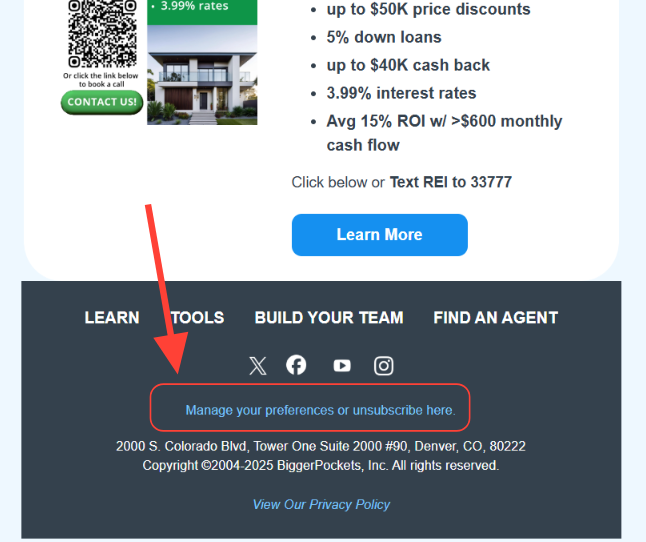
This is a legal requirement and a trust signal. (e.g., CAN-SPAM Act in the US, GDPR in Europe).
A clear, easily accessible unsubscribe link is crucial.
Don’t hide it or make it difficult to find.
Similarly, including your physical address at the bottom of your email is a trust signal and a legal mandate.
It shows you’re a legitimate business.
d) Understanding Email Authentication: DKIM, SPF, and DMARC
DKIM, SPF, and DMARC are essential for email deliverability.
They prove to ISPs that your emails are authentic and haven’t been forged, helping you stay out of the spam folder.
- SPF (Sender Policy Framework): Authorizes which mail servers are permitted to send email on behalf of your domain.
- DKIM (DomainKeys Identified Mail): Provides a way to verify that the email was actually sent by the domain it claims to be from and hasn’t been tampered with.
- DMARC (Domain-based Message Authentication, Reporting & Conformance): Builds on SPF and DKIM, giving senders the ability to tell receiving mail servers what to do if an email fails SPF or DKIM checks (e.g., quarantine, reject).
Setting up these authentication protocols properly tells ISPs that you are who you say you are, significantly reducing the likelihood of your emails being marked as spam.
If you’re unsure about these, contact your ESP’s support or your IT team for assistance.
These avoid spam filter best practices are non-negotiable for serious email marketers.
6. How Our Spam Checker Works
Even with all these best practices, it’s easy to miss something.
That’s where a good spam checker comes in handy.
Our free email template spam checker is designed to give you a quick, comprehensive audit of your email before you hit send.
Step 1: Paste your Email HTML

Begin by pasting the complete HTML code of your email into the editor to start the validation process.
After pasting your email HTML, click “Check Spam Score.” 100/100= the best score email will not be marked spam.
Step 2: Get Your Spam Analysis Results
Once your HTML is processed, you’ll immediately receive a detailed report outlining your email’s spam score and highlighting any detected issues.
What it checks:
Our tool analyzes various elements within your email to identify potential spam triggers and deliverability issues.
Here’s a breakdown of what our checker scrutinizes
- Spam Words Detection: Scans your subject and body for spam trigger words, flagging problematic terms for rephrasing.
- HTML Structure: Scrutinizes your email’s code for messy tags or unclosed elements that can trigger spam filters.
- Unsubscribe Link: Verifies your unsubscribe link’s presence and correct format, which is essential for compliance and avoiding complaints.
- Text Content Ratio: Analyzes your text-to-image balance, assessing if the ratio is optimal or too image-heavy for deliverability.
- Image Content: Examines images for issues like hidden text or large file sizes, ensuring visuals don’t raise spam flags.
How to interpret your results:

After clicking ‘Check Spam Score,’ you’ll receive a detailed report to understand your email’s deliverability.
Your Overall Spam Score (e.g., 70/100, as seen in the example) reflects its general health; while 100/100 is the ideal for inbox placement, a score of 70/100 indicates issues that demand immediate attention to ensure your email reaches its recipients.
Review the Detailed Breakdown for each category (like “Spam Words Detection,” “HTML Structure,” etc.) to see specific findings and areas for improvement.
Pay close attention to “Problem” (red) and “Warning” (yellow) statuses, as these pinpoint crucial actions needed to boost your result.
Ready to see how your email measures up?
Don’t leave deliverability to chance! Test your email template with our free tool today!
7. Bonus: Tips to Improve Inbox Placement
Beyond avoiding spam triggers, there are proactive steps you can take to build a stellar sender reputation, which directly impacts inbox placement.
- Engagement Signals (Open/Click Rates): This is paramount. ISPs monitor how their users interact with your emails. If any of your subscribers are opening your emails, clicking on your links, and replying, it tells the ISPs, “Hey, this sender is sending valuable content!” Focus on creating compelling content that your audience wants to engage with. A high engagement rate is the ultimate signal of a legitimate and welcome sender.
- Warming Up Your Sending Domain: If you’re new to email marketing or have a new sending domain, you can’t just send thousands of emails. ISPs are suspicious of sudden, large spikes in email volume from unknown domains. “Warming up” means gradually increasing your sending volume over several weeks or months. Start with your most engaged subscribers, send small batches, and slowly ramp up. This builds trust with ISPs over time.
- Using a Dedicated Sending IP vs. Shared:
- Shared IP: Many smaller businesses and new senders start on shared IPs, where your emails are sent from the same IP address as other senders. The pro is that the deliverability reputation is shared, but the con is that if another sender on that shared IP misbehaves (sends spam, gets blacklisted), your deliverability can suffer too, even if you’re doing everything right.
- Dedicated IP: A dedicated IP address is exclusively yours. This means your sender’s reputation is entirely in your hands. The benefit is full control, but the responsibility is also yours to maintain a good sending reputation. This is typically recommended for senders with high email volumes (e.g., over 100,000 emails per month) who can consistently send high-quality, engaging content.
Wrapping Up
By focusing on these proactive strategies and diligently avoiding spam triggers and optimizing your email templates, you’re not just avoiding the spam folder, you’re building a strong, trusted relationship with both ISPs and, most importantly, your subscribers.
Happy emailing!
Your Favourite Creators are using Convert Now
Join them and start sending your newsletters, email marketing campaigns and automation flows today!
